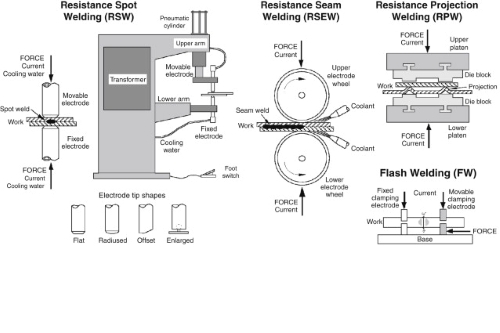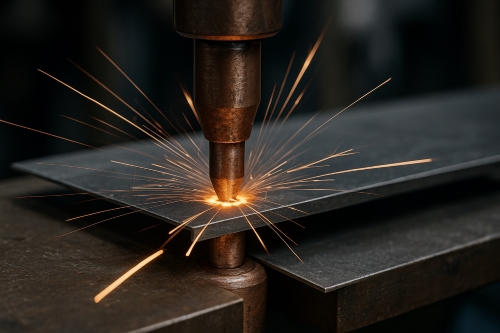Top 10 Ceramic Materials for Thermal Management
What is thermal conductivity?
Thermal conductivity refers to the capacity of a material to conduct heat. In simpler terms, it indicates the rate at which heat traverses a substance. High thermal conductivity denotes rapid heat transfer, while low thermal conductivity indicates better heat retention by the material. This property holds significance as it influences the application of materials in engineering and everyday devices. Engineers usually consider thermal conductivity when selecting materials for electronics or engine components.
Thermal conductivity table of common ceramic materials
Below is a straightforward table detailing some common ceramics and their thermal conductivities. The figures provided are approximate and may vary with purity and production methods.
|
Material |
Thermal Conductivity (W/m·K) |
|
Alumina |
20-35 |
|
Silicon Nitride |
20-30 |
|
Beryllium Oxide |
200-250 |
|
Aluminium Nitride |
140-180 |
|
2-3 |
|
|
Magnesium Oxide |
40-60 |
|
Cordierite |
3-4 |
|
Silicon Carbide |
70-120 |
|
Titanium Diboride |
40-60 |
|
Boron Nitride (Hexagonal) |
30-60 |
These values are average measurements taken in laboratory conditions. Actual values will depend on factors such as processing and structure.
Top 10 ceramic materials with high thermal conductivity
We will now examine the ceramic materials that excel in heat transfer.
1. Beryllium Oxide – 200–250 W/m·K
Beryllium Oxide exhibits a thermal conductivity of 200-250 W/m·K. It is utilised in high-performance ceramic insulators. Engineers prefer it for electronic packaging due to its effective heat dissipation.
2. Aluminium Nitride – 140–180 W/m·K
Aluminium Nitride is effective for thermal management, with a conduction rate between 140-180 W/m·K. It is suitable for high-power electronics and is also used in heat sinks and substrates.
3. Silicon Carbide – 70–120 W/m·K
Silicon Carbide demonstrates a conductivity of 70-120 W/m·K and possesses good mechanical strength. The material is often applied in high-temperature settings, such as industrial furnaces.
4. Magnesium Oxide – 40–60 W/m·K
Magnesium Oxide conducts heat at rates of 40-60 W/m·K and is commonly employed in refractory applications and insulative parts for kilns.
5. Titanium Diboride – 40–60 W/m·K
Titanium Diboride possesses a thermal conductivity range of 40-60 W/m·K and is used in applications requiring both high strength and effective heat conduction, such as armour systems and heating elements.
6. Hexagonal Boron Nitride – 30–60 W/m·K
Hexagonal Boron Nitride, with a conductivity range of 30-60 W/m·K, is recognised for its stable performance at elevated temperatures. It also acts as an electrical insulator, which is advantageous in electronics.
7. Alumina (Aluminium Oxide) – 20–35 W/m·K
Generic Alumina indicates a thermal conductivity of 20-35 W/m·K. Its abundance and cost-effectiveness make it a popular choice. Components made from alumina are integrated into various heat management systems.
8. Silicon Nitride – 20–30 W/m·K
Silicon Nitride provides a conductivity of 20-30 W/m·K. Although it does not rank as the highest, it balances strength, durability, and thermal management, making it suitable for automotive engine components.
9. Cordierite – 3–4 W/m·K
While cordierite has lower thermal conductivity (3-4 W/m·K) compared to others in this selection, its reduced coefficient of thermal expansion makes it appropriate for thermal shock-resistant applications.
10. Zirconia (Stabilised) – 2–3 W/m·K
Stabilised Zirconia does not exhibit significant thermal conductivity (2-3 W/m·K). Nevertheless, its unique thermal expansion properties render it useful in some applications. It is essential in certain high-temperature systems that require minimal deformation.
The top five materials included here (Beryllium Oxide, Aluminium Nitride, Silicon Carbide, Magnesium Oxide, and Titanium Diboride) provide the highest performance in terms of thermal conduction. The remaining materials offer beneficial properties when considering thermal stability or cost factors.
Applications of thermally conductive ceramic materials
Thermally conductive ceramics find numerous applications.
They are utilised in electronics, where heat generated by microprocessors requires dissipation. Aluminium Nitride and Beryllium Oxide are commonly found in circuit boards and packaging for chips. In power electronics, effective heat removal can enhance the lifespan of devices.
In high-temperature industrial contexts, Silicon Carbide and Magnesium Oxide are effective. They are present in heating elements, kiln components, and furnace linings. Automotive parts and engines occasionally employ Silicon Nitride due to its combination of thermal conductivity and strength.
Ceramics also contribute in the aerospace sector. Their capacity to endure high heat loads makes them suitable for components in jet engines and spacecraft. These materials help regulate temperatures, allowing sensitive instruments to operate safely.
Certain medical devices benefit from ceramics. Their biocompatibility and controlled heat conduction are suitable for implantable devices and diagnostic equipment. Additionally, materials such as Hexagonal Boron Nitride assist in heat management for laser systems and high-power lighting.
Industrial heat exchangers may use ceramic composites. These mixtures are designed to maintain structural integrity even at elevated temperatures while ensuring reliable heat dissipation. The selection of materials depends on thermal loads, required mechanical strength, and cost constraints.
Conclusion
Thermally conductive ceramics play a vital role in contemporary engineering. Their capacity for efficient heat transfer is significant in electronics, industry, aerospace, and medicine. Materials such as Beryllium Oxide, Aluminium Nitride, and Silicon Carbide lead in high performance. Other ceramics provide advantages like durability, minimal thermal expansion, and cost-effectiveness.
Frequently asked questions
F: Why is thermal conductivity important in ceramics?
Q: It impacts the performance of materials in electronics and high-temperature applications by facilitating effective heat transfer.
F: How is thermal conductivity measured?
Q: It is quantified in watts per metre-kelvin using a controlled temperature differential and heat flow.
F: What applications utilise high thermal conductivity ceramics?
Q: They are employed in electronics, industrial heating elements, aerospace components, and medical devices.

 Bars
Bars
 Beads & Spheres
Beads & Spheres
 Bolts & Nuts
Bolts & Nuts
 Crucibles
Crucibles
 Discs
Discs
 Fibers & Fabrics
Fibers & Fabrics
 Films
Films
 Flake
Flake
 Foams
Foams
 Foil
Foil
 Granules
Granules
 Honeycombs
Honeycombs
 Ink
Ink
 Laminate
Laminate
 Lumps
Lumps
 Meshes
Meshes
 Metallised Film
Metallised Film
 Plate
Plate
 Powders
Powders
 Rod
Rod
 Sheets
Sheets
 Single Crystals
Single Crystals
 Sputtering Target
Sputtering Target
 Tubes
Tubes
 Washer
Washer
 Wires
Wires
 Converters & Calculators
Converters & Calculators
 Write for Us
Write for Us
 Chin Trento
Chin Trento



